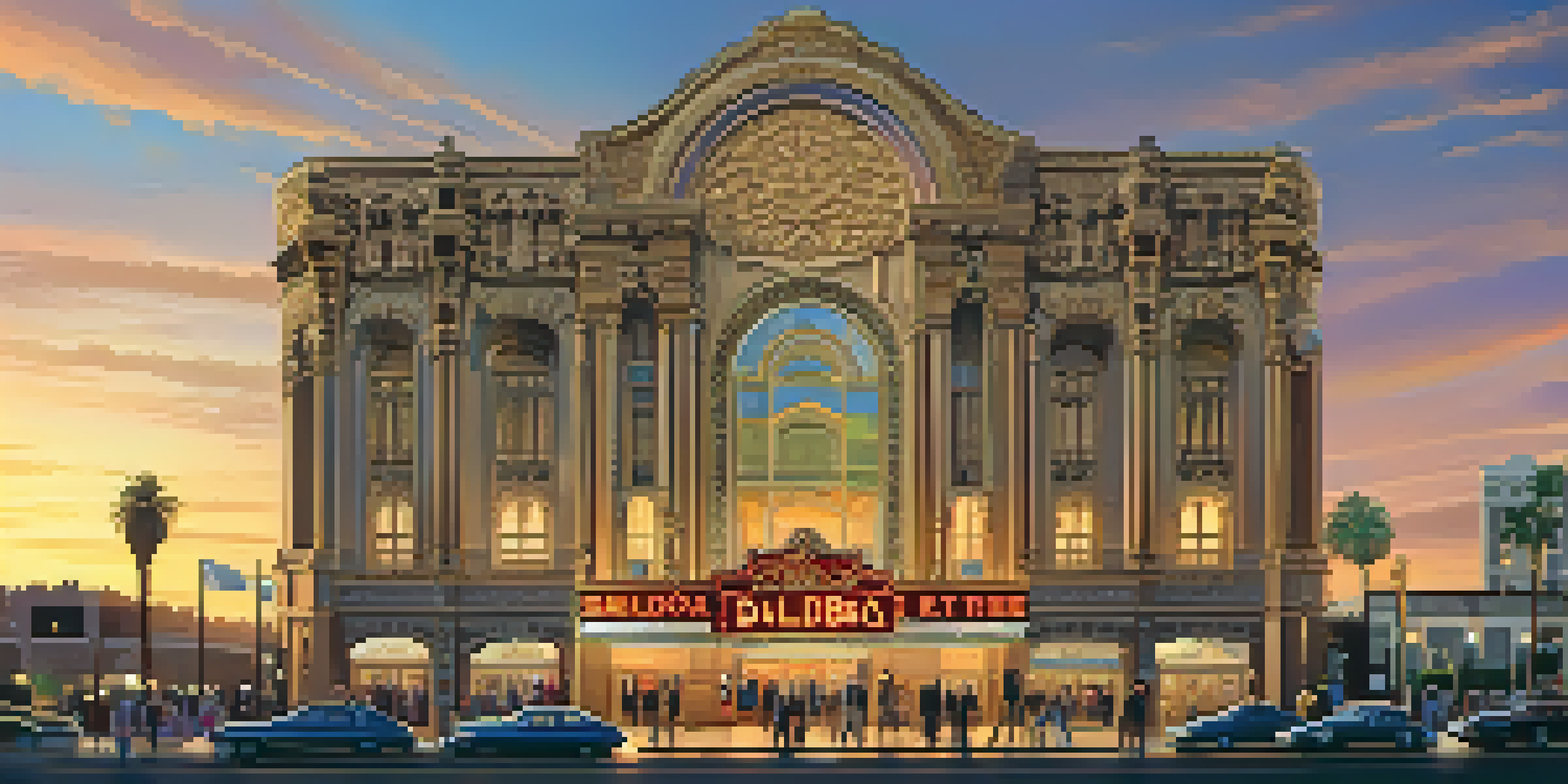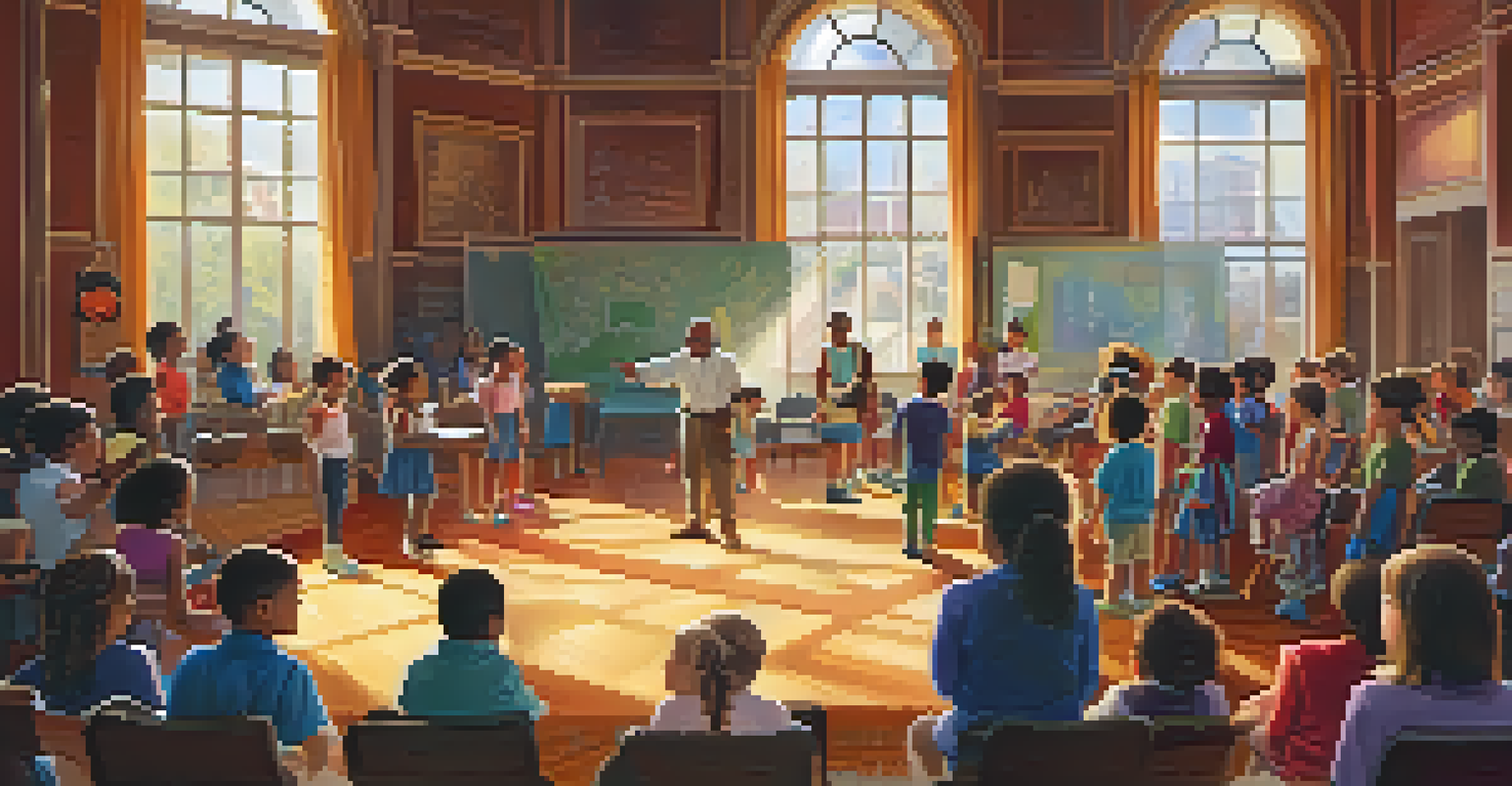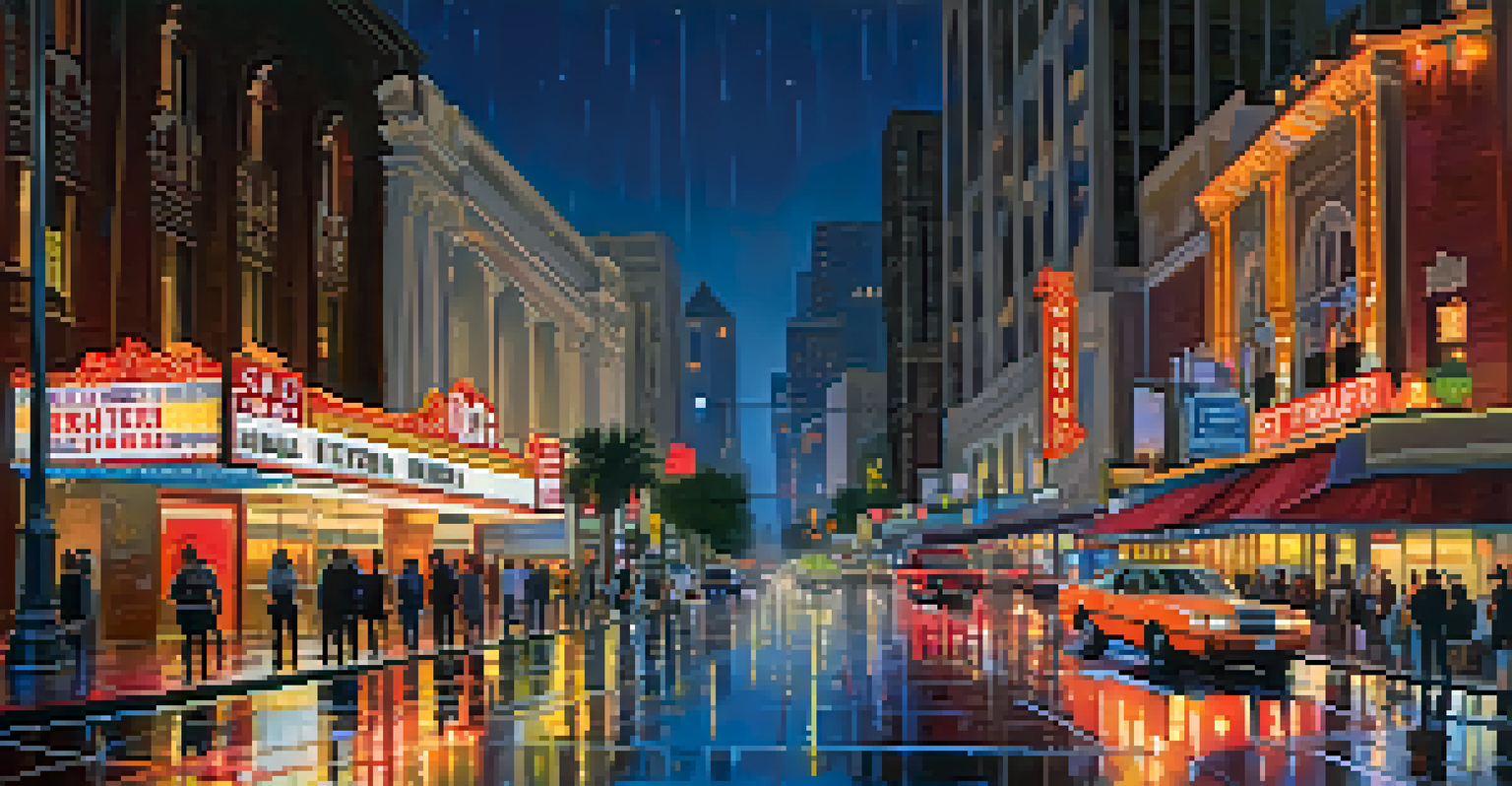How San Diego's Historic Theaters Support Local Productions

The Historical Significance of San Diego's Theaters
San Diego is home to a rich tapestry of historic theaters, each with its own story. These venues, like the Balboa Theatre and the Old Globe, have hosted countless performances over the decades, making them cultural landmarks. Their architectural beauty and unique charm not only attract visitors but also serve as a reminder of the city's artistic heritage.
The theater is a world of the imagination, and in that world, we can see the past, present, and future all at once.
The preservation of these theaters is crucial, as they embody the artistic spirit of San Diego. By maintaining these historic sites, we ensure that future generations can appreciate the same performances that captivated audiences in the past. This commitment to preservation helps keep the local arts scene vibrant and engaging.
Moreover, these theaters often serve as community hubs, bringing people together for various cultural events. Their longstanding presence in the community fosters a sense of pride and belonging, making them integral to the local identity.
Supporting Emerging Local Artists and Productions
Many of San Diego's historic theaters actively support local artists by providing them with a platform to showcase their work. This support is crucial for emerging talents who may not have the resources to produce their own shows. By hosting local productions, these theaters contribute to a thriving arts scene that nurtures creativity and innovation.

For instance, programs like the Old Globe's 'Globe for All' initiative offer free performances in various neighborhoods, making theater accessible to everyone. This not only benefits the artists but also enriches the community by introducing diverse stories and perspectives. Such initiatives create a powerful bond between the theaters and the local population.
Historic Theaters as Cultural Hubs
San Diego's historic theaters serve as vital cultural landmarks that foster community pride and enhance the local arts scene.
Additionally, local productions often bring fresh narratives and unique interpretations of classic works, attracting a wider audience. This diversity fosters an inclusive atmosphere where different voices can be heard, ultimately strengthening the community's cultural fabric.
Economic Impact of Historic Theaters on Local Productions
The economic contribution of San Diego's historic theaters extends beyond the stage. By hosting local productions, these venues draw in audiences who spend money at nearby restaurants, shops, and hotels. This ripple effect helps stimulate the local economy, creating jobs and supporting small businesses.
The arts are the most powerful means of preserving and celebrating our cultural heritage.
Moreover, the increased foot traffic generated by performances can lead to heightened interest in the arts. As more people attend shows, they become more invested in local culture, which can lead to increased funding and sponsorship for future productions. This cycle of support is vital for the sustainability of the local arts scene.
Ultimately, when historic theaters thrive, the entire community benefits. The economic boost provided by these venues not only helps sustain the arts but also enhances the overall appeal of San Diego as a cultural destination.
Collaboration Between Theaters and Local Artists
Collaboration is key in the world of local theater, and historic venues often take the lead in fostering these partnerships. By providing resources such as rehearsal spaces and technical support, they empower local artists to bring their visions to life. This collaborative spirit enhances the overall quality of productions, benefitting both artists and audiences.
For example, theaters like the La Jolla Playhouse frequently partner with local companies to develop new works. These collaborations not only showcase local talent but also attract attention from outside the community, creating opportunities for wider recognition. Such partnerships can be pivotal in launching the careers of emerging artists.
Support for Local Artists
These theaters actively support emerging local artists by providing platforms and resources for their productions.
Furthermore, these collaborations help cultivate a sense of community among artists. When local talent comes together to create, it strengthens bonds and fosters an environment of mutual support that can lead to innovative and exciting new productions.
Community Engagement Through Educational Programs
San Diego's historic theaters are not just about performances; they also play a crucial role in education. Many of these venues offer workshops, classes, and outreach programs that engage the community and cultivate a love for the arts. These educational initiatives are essential for inspiring the next generation of artists and theatergoers.
For instance, programs designed for schools often introduce students to the world of theater, teaching them skills ranging from acting to stage management. Such hands-on experiences can ignite a passion for the arts in young people, encouraging them to pursue their creative interests. This engagement with youth can foster a lifelong appreciation for theater.
Additionally, these educational programs often promote inclusivity, making the arts accessible to individuals of all backgrounds. By breaking down barriers and providing opportunities for learning, historic theaters help create a more diverse and vibrant arts community.
The Role of Theaters in Cultural Preservation
Historic theaters are vital in preserving cultural heritage, as they often host productions that reflect the community's unique stories and traditions. By showcasing local narratives, they help maintain a connection to the past while also pushing the boundaries of contemporary art. This fusion of old and new keeps the local arts scene dynamic and relevant.
Moreover, many theaters engage with local history through themed events and performances that celebrate significant cultural milestones. This not only educates audiences but also honors the diverse backgrounds of San Diego's residents. By embracing cultural diversity, these theaters enrich the community's artistic landscape.
Economic Boost from Local Productions
Hosting local productions not only enriches the arts but also stimulates the local economy by attracting audiences to nearby businesses.
In addition, the commitment to cultural preservation is evident in the programming choices made by these theaters. By prioritizing local stories and artists, they ensure that the voices of the community are heard and valued, fostering a sense of pride among residents.
Challenges Facing Historic Theaters and Local Productions
Despite their many contributions, San Diego's historic theaters face several challenges that can impact local productions. Funding is often a significant concern, as these venues must compete for financial resources with larger organizations. This can limit the number of local productions that can be staged, which ultimately affects the vibrancy of the arts scene.
Additionally, the need for ongoing maintenance and renovations can strain budgets. Many historic theaters require significant investment to preserve their unique features while also upgrading facilities to meet modern standards. Balancing these needs is a delicate task that theater management must navigate carefully.

Finally, the changing landscape of entertainment, particularly with digital distractions, poses a challenge for attracting audiences. Historic theaters must find innovative ways to engage the community and draw people in, ensuring that local productions remain a vital and appealing option for entertainment.